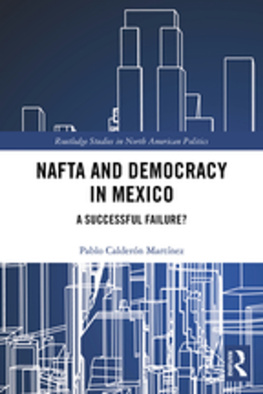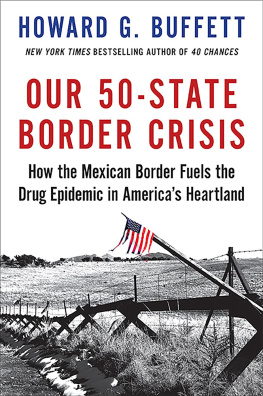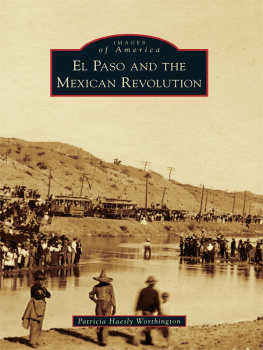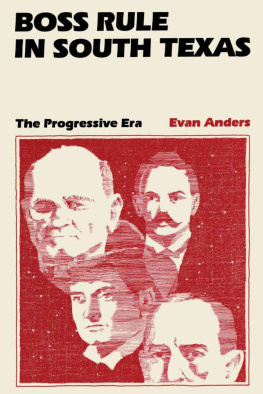First published 1994 by Westview Press
Published 2018 by Routledge
52 Vanderbilt Avenue, New York, NY 10017
2 Park Square, Milton Park, Abingdon, Oxon OX14 4RN
Routledge is an imprint of the Taylor & Francis Group, an informa business
Copyright 1994 by Taylor & Francis
All rights reserved. No part of this book may be reprinted or reproduced or utilised in any form or by any electronic, mechanical, or other means, now known or hereafter invented, including photocopying and recording, or in any information storage or retrieval system, without permission in writing from the publishers.
Notice:
Product or corporate names may be trademarks or registered trademarks, and are used only for identification and explanation without intent to infringe.
Library of Congress Cataloging-in-Publication Data
Betts, Dianne C.
Crisis on the Rio Grande : poverty, umemployment, and economic
development on the Texas-Mexico border / Dianne C. Betts and Daniel J. Slottje
p. cm.
Includes bibliographical references and index.
ISBN 0-8133-8812-0
1. Mexican-American Border RegionEconomic conditions.
2. Mexican-American Border RegionSocial conditions. 3. Canada,
Treaties, etc. 1992 Oct. 7. I. Slottje, Daniel Jonathan, 1957.
II. Title.
HC137.M46847 1994
330.9721dc20
93-38472
CIP
ISBN 13: 978-0-367-0-1677-7 (hbk)
We are indebted to a number of people and institutions for their help with the research for this study. In particular we owe thanks to the Government Documents staff and the interlibrary loan staff of Fondren Library at Southern Methodist University, the staff of the Economic Research Center for Mexico in Bala Cynwyd, Pennsylvania, the staff of the Bureau of Business Research in Austin, Texas, and the staff of the Texas governors office. We especially appreciate the support we received from the Region 7 Office of the Texas Department of Human Services and the Coalition of Community Service Agencies. Their personal attention put a human face on the issues of the border.
We have benefitted from the excellent editorial staff at Westview Press as well as the comments from anonymous referees. The Federal Reserve Bank of Dallas and the Texas Agricultural Market Research Center both allowed us to reprint various tables. In any case, the interpretation and any errors this study might contain rest solely with us.
Dianne C. Betts
Daniel J. Slottje
Each year, beginning in September, thousands of trailers, mobile homes, and recreational vehicles snake their way through Texas from the Midwest. These snow-to-sun migrants, known as Texas snowbirds, settle for four to eight months in the broad delta that comprises the Lower Rio Grande Valley (LRGV). The Texas portion of this Magic Valley is approximately 60 miles deep and 160 miles long. Officially, it includes Cameron, Hidalgo, and Willacy counties. For the purpose of this study, however, Starr county will also be included. On the Mexican side of the Rio Grande River lies the state of Tamaulipas with two large population centers, Matamoros and Reynosa, as well as a number of other smaller towns. It is in this region that the relative prosperity and poverty of the United States and Mexico creates a unique relationship governed by its own set of rules.
The influx of these cold-weather migrants adds to the diversity of a region which is tri-cultural. Mexican-Americans, Anglos, and Mexican Nationals constitute the majority of the more than 1.7 million people living in this combination of rural-agrarian and urban-industrial areas. A constant two-way exchange flows between Mexico and Texas as people shop, work, visit friends and relatives, and seek health care, creating a curious sense of unity and a unique frontera ambiance within the Valley. The palm trees, bougainvillea, and oleanders contrast with the starkness of the coastal plain of southern Texas and the arid lands of northern Mexico.
Amidst this tropical lushness exist a number of major social and economic problems: severe poverty, illegal immigration, overpopulation, and unemployment to name a few. This contrasts sharply with the more traditional images of Texans: the rich and wily oil barons surrounded by opulence as they scheme their way through one international oil deal after another; or the tough, hard-drinking, hard-fighting cowboys who control vast acres of ranch land with an ability and intensity equal to that of the oil barons. Rich and Texan go together like ham and eggs in the minds of much of the world. The LRGV, however, comprises another, less attractive Texas - one marked by many of the characteristics put forward by Michael Harrington in his classic study of poverty: Spanish-speaking, unemployed, and residents of a depressed region.the border region possesses a level of economic development that bears closer resemblance to the level of development in the Third World than it does to the rest of the United States, particularly in the rural parts of the region. The poverty in the Lower Rio Grande Valley (LRGV) is a direct result of economic and social processes which have worsened over time and created poverty levels without equal in the rest of northern Mexico and the United States. This study attempts to characterize, quantify, and analyze the conditions under which people in this region live and why they live this way.
In 1990, U.S. Census studies listed the population of Cameron, Hidalgo, Starr, and Willacy counties as 701,888. This figure, however, excludes the thousands of snowbirds who either own property in the LRGV or live in the numerous trailer parks and guest apartment complexes. Poverty is a fact of life for the majority of the permanent inhabitants of these counties. In most of the towns in these counties, Mexican-American barrios exist which differ from similar ethnic neighborhoods in urban areas further north. These barrios are dotted with tiny, single-family dwellings, often several to a small lot Efforts by city and county officials to condemn them have been unsuccessful. In the countryside, urban barrios are replaced by subdivisions known as colonias . Here the poverty is more visibly acute. The frequently unmarked streets are lined with one-room wooden shacks, wooden outhouses, and bright green garden hoses attached to the only source of treated water, a single outdoor spigot Just as poverty in rural Mississippi or Appalachia lies off the beaten track, these colonias, too, remain relatively invisible since many of them lie far from major highways and roads. One can travel all the way from Brownsville to Rio Grande City on Hwy. 83 and never see them. However, they are gaining increasing visibility as attempts are made to solve the problems plaguing them.
There are several densely populated cities in the LRGV, including Brownsville and Harlingen in Cameron county and McAllen in Hidalgo county with a combined population of 231,718. Economic activity in the Valley revolves around agribusiness, food processing, shipping, oil processing, tourism, fishing, and manufacturing. Much of the area is famous as a winter resort and as a gateway to Mexico. The snowbirds that swell the population during the fall and winter months play an important role in tourism, spending more than $50 million each year.






